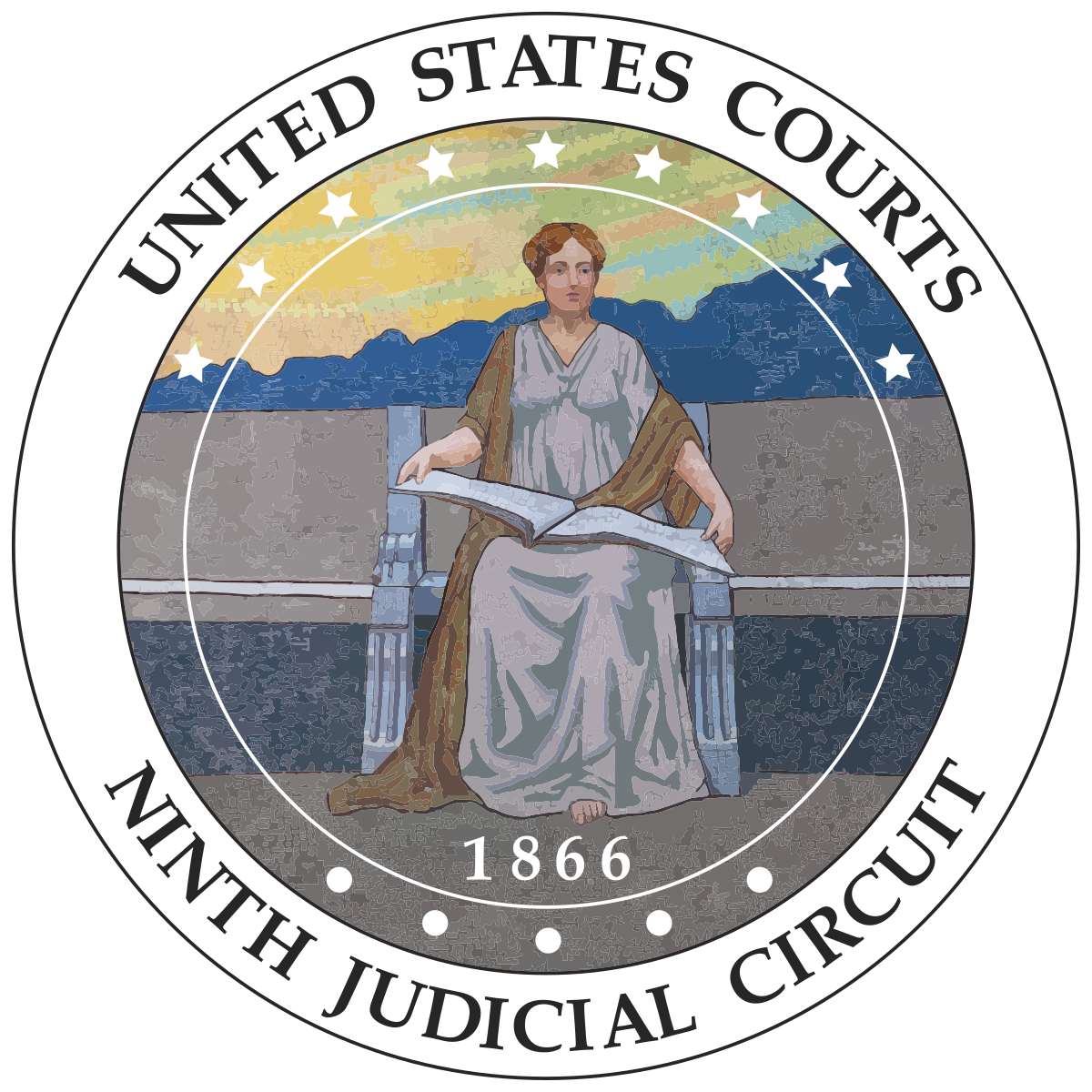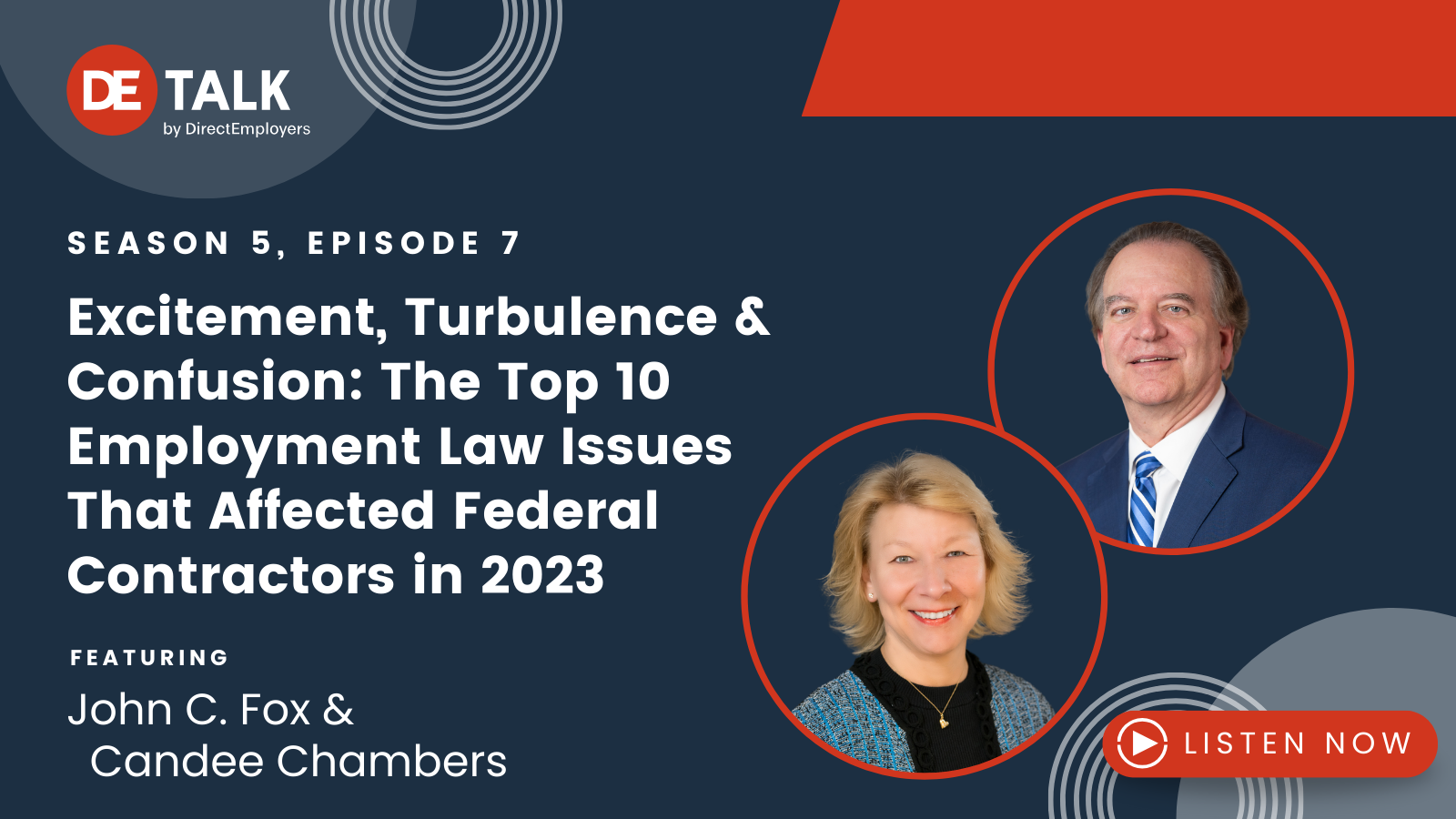
- FAR Council Proposed Rule on “Pay Equity and Transparency in Federal Contracting” Unveiled
- OFCCP Added Ten New FAQs on “Compensation History”
- U.S. Office of Personnel Management Announced Final Rule Prohibiting Consideration of Current or Past Pay in Determining Federal Worker Compensation
- JOLTS Report – Job Openings Increased by 101k in December, Rate Unchanged at 5.4%
- Excitement, Turbulence & Confusion: DE Talk Podcast Reviews Top 10 Employment Law Issues That Affected Federal Contractors in 2023
- Economy Added 353k Jobs in January, Unemployment Rate Unchanged at 3.7%
- In Brief
- Looking Ahead: Upcoming Date Reminders
Monday, January 29, 2024: FAR Council Proposed Rule on “Pay Equity and Transparency in Federal Contracting” Unveiled
Proposal Would Require Complaints Within OFCCP Jurisdiction Be Forwarded to OFCCP

Comments on the NPRM are due by April 1, 2024. You may submit them here or here.
Note: The Proposed Rule does NOT seek to forbid federal contractors from inquiring about prior salary history across the contractors’ entire company, or affiliated companies subject to the contractor’s control. Rather, the FAR Council has limited its NPRM to just those employees working on or under a covered federal Government contract. Moreover, the FAR Council has also limited its “pay transparency” requirements (disclosing salary ranges in job postings) to those jobs working on or under the covered federal Government contract or subcontract.
Important: If the FAR Council’s NPRM goes to final form as currently written, covered federal Government contractors would then be put to the choice of either tattooing ONLY their job postings for work on or under federal contracts to contain the required pay transparency disclosures and salary history consideration limitations, OR to apply the FAR Council’s limitations across the board to all job openings, including those not related to federal contracts or subcontracts in deference to the “KISS” rule (“Keep It Simple Stupid.”)
How We Got Here
The NPRM would implement President Biden’s Executive Order (“EO”) 14069, which he issued on March 15, 2022 (See the third paragraph of our story here for details on that EO).
In an exclusive last month, we reported the FAR Council submitted the proposal for OMB approval on December 4, 2023. John Fox and Candee Chambers also discussed this pending proposal in the January 2nd edition of DE Under 3. The White House Office of Management and Budget (“OMB”) approved the NPRM on January 11, 2024, clearing the way for publication. The Fall 2023 Regulatory Agenda set February 2024 as the publication target date; thus, Tuesday’s official publication was a couple of days ahead of schedule.
Complaint Procedures
In another sign of the White House’s flagging support of OFCCP, the proposal provides that applicants wishing to file a complaint alleging a contractor’s failure to comply with these proposed regulations must submit that complaint to a central collection point of the agency that issued the solicitation or awarded the contract or order, as identified at www.dol.gov/general/labor-advisors, and NOT OFCCP. The applicant must file the complaint within 180 days of the date the alleged violation occurred.
Following submission, the contracting agency will review the complaint, consult with the complainant as necessary to confirm the complainant is a covered applicant, and act as appropriate. Complaints alleging discrimination prohibited by E.O. 11246, Section 503 of the Rehabilitation Act of 1973, and the Vietnam Era Veterans’ Readjustment Assistance should be submitted directly to OFCCP. If complaints alleging discrimination are submitted to an agency central collection point rather than directly to OFCCP, the complaints will be forwarded to OFCCP.
Proposed Broad Coverage
The NPRM would apply only to prime contracts and subcontracts with a principal place of performance within the United States including its outlying areas. As proposed, the regulations would apply to contracts and subcontracts of any amount and at any tier, even those below the Simplified Acquisition Threshold (generally $250,000). Among the rationales for this proposed coverage is that “many Government contractors, including small businesses, already have incorporated [state and local law requirements similar to those of the NPRM] into their existing human capital management practices.” However, the FAR Council stated it will consider public feedback before making a final determination on the scope of the finalized regulations.
Monday, January 29, 2024: OFCCP Added Ten New FAQs on “Compensation History”
While not prohibiting its use, OFCCP’s FAQs Suggest that Contractor Use of Prior Salary History May Indicate Pay Discrimination

OFCCP posted the new FAQ section in conjunction with a White House announcement to mark the 15th Anniversary of the Lilly Ledbetter Fair Pay Act, The new FAQs reference other actions this past week by the FAR Council and the U.S. Office of Personnel Management (“OPM”) regarding the use of compensation history in setting pay. The White House announcement also discussed the FAR Council and OPM actions, and we report on them in detail elsewhere in this WIR edition.
Items of note in the FAQ include Item 4 which states in part:
“OFCCP can investigate whether an employer’s reliance on prior salary (or other forms of compensation) is resulting in or contributing to unlawful discrimination under [the laws OFCCP enforces]. This might happen if, for example, an employer’s use of prior salary to set pay creates gender- or race-based pay gaps in its workforce.”
In Item 5, OFCCP states in part:
“Currently, a private employer’s reliance on compensation history to set pay may not itself be prohibited under federal law, but the practice may contribute to unlawful discrimination, depending on the specific facts and circumstances at issue.
….
Note: Neither the EEOC nor OFCCP have ever brought claims of unlawful discrimination based on an employer’s use of prior pay history to set current salaries of employees.
“While OFCCP does not enforce the [Equal Pay Act], OFCCP enforces compensation discrimination under Executive Order 11246 consistently with the principles of Title VII of the Civil Rights Act (Title VII). Gender-based pay discrimination claims under Title VII are subject to the affirmative defenses used to justify gender pay differentials under the EPA, including the employer’s defense that the pay disparity is due to any other factor other than sex. As a result, for Executive Order 11246 compensation discrimination claims, employers may similarly be precluded from justifying gender-based pay disparities by claiming they relied upon candidates’ prior or existing pay.”
Editor’s Note: In so stating, OFCCP has now asserted that it intends to strike out into new legal territory both (a) by seeking to enforce the Equal Pay Act (over which it has no legal authority to enforce or interpret) and (b) to seek to defeat the Equal Pay Act defense that a contractor’s consideration of prior pay in setting current pay is NOT a “factor other than sex.” Contractors will now have to watch carefully to determine if OFCCP converts this new and radical “stretch of policy position” into operational terms in audits.
Monday, January 29, 2024: U.S. Office of Personnel Management Announced Final Rule Prohibiting Consideration of Current or Past Pay in Determining Federal Worker Compensation

While the effective date is April 1, the covered federal agencies have until October 1, 2024, to come into full compliance.
Under the Final Rule, covered agencies will not be allowed to set pay based on non-federal salary history for those who are joining the federal government for the first time or are returning after a break in federal service. The Final Rule also prohibits covered agencies from considering the salary in a candidate’s competing job offer when setting pay. Moreover, agencies will be required to have policies regarding setting pay based on a previous federal salary for employees who have previous civilian service in the federal government.
In its announcement, the OPM noted that:
“Currently, 21 states have laws or executive orders that address employers’ use of an applicant’s salary history, including directives that, like OPM’s final regulations, prohibit employers from relying on a job applicant’s salary history in setting pay.”
How We Got Here
On May 11, 2023, the OPM published its proposed version of the Rule in the Federal Register. (See our story here). The public comment period closed on June 12, 2023, with 63 comments submitted. The OPM discussed those comments and its responses, along with the agency’s rationale for either adopting or declining those suggestions, in the preamble to the Final Rule beginning here.
Tuesday, January 30, 2024: JOLTS Report – Job Openings Increased by 101k in December, Rate Unchanged at 5.4%

In December, job openings increased in professional and business services (+239,000) but decreased in wholesale trade (-83,000).
Hires, Layoffs/Discharges & Other Separations Up; Total Separations & Quits Down
The number of hires in December was 5,621,000 compared to the adjusted 5,554,000 number for November (+67,000). The rate increased slightly to 3.6 percent, compared to the adjusted 3.5 percent rate in November. The number of hires decreased in health care and social assistance (-119,000) but increased in state and local government, excluding education (+35,000).
Total separations were 5,365,000 for December, compared to 5,401,000 for November (-36,000). The December rate was unchanged at 3.4 percent. Over the month, the number of total separations decreased in health care and social assistance (-91,000) but increased in wholesale trade (+39,000).
Within separations, quits in December were 3,392,000 down from 3,524,000 in November (-132,000). The December rate was unchanged at 2.2 percent. The number of quits decreased in health care and social assistance (-71,000) and in transportation, warehousing, and utilities (-35,000). The number of quits increased in wholesale trade (+63,000).
Layoffs and discharges in December were 1,616,000, up from 1,531,000 in November (+85,000). The December rate was 1.0 percent for the fourth month in a row. The number of layoffs and discharges increased in transportation, warehousing, and utilities (+43,000) and in state and local government, excluding education (+18,000). The number of other separations was 358,000 in December, up from 346,000 in November (+12,000). The percentage rate held steady at 0.2.
BLS posted interactive graphs here.
Three-Month Comparison Chart of Job Openings vs. Jobs Filled
Our below table reports the number of available jobs (as taken from the revised JOLTS reports) from the last four months of available data, as revised.
| Reports | September | October | November | December |
|
JOLTS available jobs Prior/mo. Comparison |
9,350,000 (147,000 < August) * |
8,852,000 (498,000 < September) |
8,925,000 (73,000 > October) |
9,026,000 (101,000 > November) |
*August Job Openings were 9,497,000
Note: BLS is scheduled to release the JOLTS Report for January 2024 on Wednesday, March 6, 2024.
Tuesday, January 30, 2024: Excitement, Turbulence & Confusion: DE Talk Podcast Reviews Top 10 Employment Law Issues That Affected Federal Contractors in 2023
Our compliance experts John C. Fox and Candee Chambers are back for their highly-anticipated recap of all things employment law from the past year. As they look back, they’ll chat about the top 10 issues affecting federal contractors as directed by government regulatory agencies, and give hints as to what may be to come in 2024. Click here to listen now!
Listen to our DE Talk Podcasts via any of the options below and subscribe to receive updates whenever a new podcast is available.
Apple • Spotify • Google • Stitcher • iHeartRadio • Stitcher • TuneIn • Overcast • Pocket Casts • Castro • Castbox • Podchaser • RSS Feed
…or your preferred Podcast provider!
Friday, February 2, 2024: Economy Added 353k Jobs in January, Unemployment Rate Unchanged at 3.7%

The labor force participation rate was unchanged at 62.5 percent. The employment-population ratio was 60.2 percent, up a smidge from December’s 60.1 percent rate.
The number of short-term unemployed persons was 6,124,000 in January, down by 144,000 from the 6,268,000 figure in December. The number of long-term unemployed (those jobless for 27 weeks or more) was 1,277,000 (20.8 percent of the total unemployed), which was up by 32,000 from December’s figure of 1,245,000 (19.7 percent of the total unemployed).
Major Worker Groups
The BLS/DOL charts below illustrate the numbers by race and ethnicity (not seasonally adjusted):
Our table below compares the major worker groups’ numbers from the last three months of available data:
|
The Employment Situation – January 2024 |
||||
| Unemployment Rate | November 2023 |
December 2023 |
January 2024 | Feb 2020 Pre-Pandemic |
| National (Seasonally adjusted) |
3.7% | 3.7% | 3.7% | 3.5% |
| White | 3.3% | 3.5% | 3.4% | 3.0% |
| Black | 5.8% | 5.2% | 5.3% | 6.0% |
| Asian | 3.5% | 3.1% | 2.9% | 2.5% |
| Hispanic (Seasonally adjusted) |
4.6% | 5.0% | 5.0% | 4.4% |
| Native Hawaiians & Other Pacific Islanders | 2.8% | 4.5% | 5.8% | 2.7% |
| Two or More Races (Not seasonally adjusted) |
5.0% | 4.5% | 5.8% | 6.1% |
| Men (20+) | 3.7% | 3.5% | 3.6% | 3.2% |
| Women (20+) (Seasonally adjusted) |
3.1% | 3.3% | 3.2% | 3.1% |
| Veteran (Not seasonally adjusted) |
2.8% | 3.0% | 3.3% | 3.7% |
| Individuals with Disabilities (Not seasonally adjusted) |
7.3% | 6.7% | 6.6% | 7.8% |
See Also:
- BLS has additional, interactive graphs available here
- President Biden’s remarks
- Acting Secretary of Labor Julie Su’s statement
- White House Counsel of Economic Advisers’ blog
- USDOL video short illustrating the report
In Brief
Monday, January 29, 2024: U.S. EEOC Announced Initiative to Enhance Outreach to Vulnerable Workers & Underserved Communities
Newest Commissioner Kotagal Will Spearhead Effort

Dubbed the REACH initiative, short for “Enhancing OutREACH to Vulnerable Workers and Underserved Communities,” it will focus on identifying ways to more effectively reach underserved communities and vulnerable workers. Underserved communities include rural areas; many Tribal nations; and other communities at a significant distance from the EEOC’s 53 field locations. Vulnerable workers include: immigrant and migrant workers and workers on temporary visas; people with developmental or intellectual disabilities; workers with mental health related disabilities; individuals with arrest or conviction records; LGBTQI+ individuals; temporary workers; older workers; individuals employed in low-wage jobs, including teenage workers employed in such jobs; survivors of gender-based violence; Native Americans/Alaska Natives; and persons with limited literacy or English proficiency. The REACH initiative will include virtual and in-person listening sessions, a review of existing research and recommendations, identification of best practices and development goals, and development of recommendations for Commission Chair Charlotte Burrows (D).
Friday, February 2, 2024: U.S. Ninth Circuit Court of Appeals Scheduled February 6 Oral Arguments on Challenge to Minimum Wage for Federal Contractors

The two EOs at issue are EO 13658, which President Obama issued on February 12, 2014, and EO 14026, which President Biden issued on April 27, 2021. On October 7, 2014, the U.S. Department of Labor’s Wage and Hour Division published a Final Rule on regulations to implement EO 13658. On November 24, 2021, the WHD published a Final Rule on regulations to implement EO 14026. (See our story here detailing these two EOs and explaining how to parse which employees are entitled to the higher minimum wage.)
In late September 2023, we reported on the rate increases under the two Final Rules that took effect, with certain exceptions, on January 1, 2024. Those exceptions are due to court orders in other pending challenges which we detailed in the same story.
Looking Ahead:
Upcoming Date Reminders
There are four NEW items added to our calendar this week:
November 2023: EEOC’s (now overdue) target date for publication of an Interim Final Rule to Amend Procedural & Administrative Regulations to Include the PWFA (RIN: 3046-AB31)
November 2023: EEOC’s target date (now overdue) to publish its NPRM to amend its regulations on exemptions to certain recordkeeping and reporting requirements (RIN: 3046-AB28)
December 29, 2023: Statutory deadline (now overdue) for EEOC to finalize regulations to enforce the Pregnant Workers Fairness Act (RIN: 3046-AB30); EEOC submitted its Final Rule for OMB review on December 27, 2023
December 2023: U.S. OSHA’s current target date (now overdue) to publish its Final Rule on Occupational Exposure to COVID-19 in Healthcare Settings (RIN: 1218-AD36)
January 15, 2024: Statutory deadline for EEOC’s (now overdue) publication of its Final Rule on the “2024 Adjustment of the Penalty for Violation of EEOC’s Notice Posting Requirement” (RIN: 3046-AB26)
February 6, 2024 (12:00 – 1:00 p.m. PST): OFCCP’s Pacific Region’s information session webinar with Marcus Stergio, Ombudsman, will discuss how the service is helpful, eligibility, and types of referrals
February 12, 2024: Comment deadline for OFCCP’s request to renew OMB approval of its online Supply & Service Contractor Portal interface, including new requirement for contractors to provide UEI numbers for the parent company and its establishments
February 12, 2024: Effective date for US DOL WHD Final Rule on “Nondisplacement of Qualified Workers Under Service Contracts”
February 15, 2024 (12:00 pm – 01:00 pm ET): DE Masterclass Employment Law Roundtable | Who is an Independent Contractor, Part II
February 20, 2024: Deadline for comments on US DOL’s Request for Information seeking public input on whether to revise the list of Schedule A job classifications that do not require permanent labor certifications to include occupations in Science, Technology, Engineering & Mathematics (“STEM”) & other non-STEM occupations.
February 26, 2024: Effective date of NLRB’s Final Rule on Standard for Determining Joint-Employer Status under the NLRA (previous December 26, 2023, effective date extended)
NEW February 27, 2024 (11:00 – 5:30 EST): US DOL WHD online seminar on prevailing wage requirements for federally-funded construction projects; register here
March 1, 2024: Expiration date for Continuing Resolution to fund the Departments of Transportation, Housing & Urban Development, Energy, Veterans Affairs, and Agriculture at current levels
March 8, 2024: Expiration date for Continuing Resolution to fund certain government agencies – including the US DOL/OFCCP, the EEOC, and the NLRB – at current levels
March 11, 2024: Effective date for US DOL WHD’s Final Rule on Employee or Independent Contractor Classification Under the Fair Labor Standards Act
March 18, 2024: Comments due on US DOL ETA’s proposal to Modernize its Registered Apprenticeship Regulations
March 19, 2024: Comment deadline for US DOL VETS request to extend – without change – the Information Collection Requirement for its HIRE Vets Medallion Program
March 2024: EEOC’s target date for proposal to amend its regulations regarding the electronic posting of the “Know Your Rights” Poster (RIN: 3046-AB29)
March 2024: U.S. NLRB’s target date for its Final Election Protection Rule (RIN: 3142-AA22)
NEW April 1, 2024: Comments due on FAR Council’s Proposed Rule on “Pay Equity and Transparency in Federal Contracting”
April 3 – April 5, 2024: DEAMcon24 New Orleans – The DEAMcon24 Program is now live!
April 2024: U.S. DOL WHD’s current target date for its Final Rule on Defining and Delimiting the Exemptions for Executive, Administrative, Professional, Outside Sales, and Computer Employees (Overtime Rule) (RIN: 1235-AA39)
NEW May 15, 2024 (11:00 – 5:30 EST): US DOL WHD online seminar on prevailing wage requirements for federally-funded construction projects; register here
NEW August 29, 2024 (11:00 – 5:30 EST): US DOL WHD online seminar on prevailing wage requirements for federally-funded construction projects; register here
September 2024: OFCCP’s current target date for its Notice of Proposed Rulemaking to “Modernize” Supply & Service Contractor Regulations (RIN: 1250-AA13)
September 2024: OFCCP’s current target date for its Final Rule on “Technical Amendments” to Update Jurisdictional Thresholds & Remove Gender Assumptive Pronouns (RIN: 1250-AA16)
September 2024: EEOC’s anticipated date for amending its FOIA procedures to add fees for electronic disclosure of records (RIN: 3046-AB20).
September 2024: U.S. DOL WHD’s target date to publish an NPRM on “Employment of Workers With Disabilities Under Special Certificates” (Subminimum Wage Rule) (RIN: 1235-AA14)
THIS COLUMN IS MEANT TO ASSIST IN A GENERAL UNDERSTANDING OF THE CURRENT LAW AND PRACTICE RELATING TO OFCCP. IT IS NOT TO BE REGARDED AS LEGAL ADVICE. COMPANIES OR INDIVIDUALS WITH PARTICULAR QUESTIONS SHOULD SEEK ADVICE OF COUNSEL.
SUBSCRIBE.
Subscribe to receive alerts, news and updates on all things related to OFCCP compliance as it applies to federal contractors.
OFCCP Compliance Text Alerts
Get OFCCP compliance alerts on your cell phone. Text the word compliance to 18668693326 and confirm your subscription. Provider message and data rates may apply.



